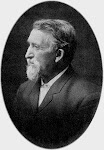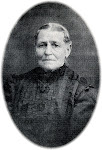Merthyr Tydfil - Influence and growth of iron industry
Merthyr was situated close to reserves of iron ore, coal, limestone and water, making it an ideal site for ironworks. Small-scale iron working and coal mining had been carried out at some places in South Wales since the Tudor period, but in the wake of the Industrial revolution the demand for iron led to the rapid expansion of Merthyr's iron operations. The Dowlais Ironworks was founded by what would become the Dowlais Iron Company in 1759, making it the first major works in the area. It was followed in 1765 by the Cyfarthfa Ironworks. As other works were established, along with associated iron ore and coal mining, Merthyr grew from a hamlet of some 700 inhabitants to an industrial city of 80,000 people.
The demand for iron was fuelled by the railways and by the Royal Navy, who needed cannons for their ships. In 1802, Admiral Lord Nelson visited Merthyr to witness cannon being made. Several railway companies established routes that linked Merthyr with coastal ports or other parts of Britain. They included the Brecon and Merthyr Railway, Vale of Neath Railway, Taff Vale Railway and Great Western Railway. They often shared routes to enable access to coal mines and ironworks through rugged country, which presented great enegineering challenges. In 1804, the world’s first railway locomotive - "The Iron Horse", developed by the Cornish engineer Richard Trevithick, pulled 10 tons of iron from Merthyr on the newly constructed tramway from Penydarren to Abercynon. This now resides in Swansea Museum.
During the first few decades of the 1800's, the ironworks at Dowlais and Cyfarthfa continued to expand and at their peak were the most productive ironworks in the world. 50,000 tons of rails left just one ironworks in 1844, to enable expansion of railways across Russia to Siberia. At its peak, the Dowlais Iron Company operated 18 blast furnaces and employed 7,300 people, and by 1857 had constructed the world's most powerful rolling mill. The companies were mainly owned by two dynasties, the Guest and Crawshay families. One of the famous members of the Guest family was Lady Charlotte Guest who translated the Mabinogion into English from its original Welsh. The families also supported the establishment of schools for their workers.
Merthyr Tydfil - The Merthyr Riots
The riots of 1831 were probably precipitated by the ruthless collection of debts, which caused great poverty and hardship amongst workers affected by lower wages when the iron trade was depressed.
There is still controversy over what actually happened and who was to blame. It was probably more of an armed rebellion than an isolated riot. The initiators of the unrest were most probably the skilled workers; men who were much prized by the owners and often on friendly social terms with them. They also valued their loyalty to the owners and looked aghast at the idea of forming trade unions to demand higher wages. But events overtook them, and the community was tipped into rebellion.
The owners took fright at the challenge to their authority, and called on the military for assistance. Soldiers were sent from the garrison at Brecon. They clashed with the rioters, and several on both sides were killed. Despite the hope that they could negotiate with the owners, the skilled workers lost control of the movement.
Some 7,000 to 10,000 workers marched under a red flag, which was later adopted internationally as the symbol of the working classes. For four days, they effectively controlled Merthyr.
Even with their numbers and captured weapons, they were unable to effectively oppose disciplined soldiers for very long, and several of the supposed leaders of the riots were arrested. Some were transported as convicts to the penal colonies of Australia. One of them, Richard Lewis, popularly known as Dick Penderyn, was hanged, creating the first local working-class martyr. Alexander Cordell's novel The Fire People is set in this period. A serious political history of these events, The Merthyr Rising was written by the Merthyr-born marxist and writer Professor Gwyn 'Alf' Williams in 1978.
The first trade unions, which were illegal and savagely suppressed, were formed shortly after the riots. The rising also helped create the momentum that led to the Reform Act. The Chartism movement, which did not consider these reforms extensive enough, was subsequently active in Merthyr.
Many families had had enough of the strife, and they left Wales to utilise their skills elsewhere. Numerous people set out by ship to America, where the steelworks of Pittsburgh were booming. It only cost about five pounds to travel steerage.


 Hubs by
Hubs by
No comments:
Post a Comment